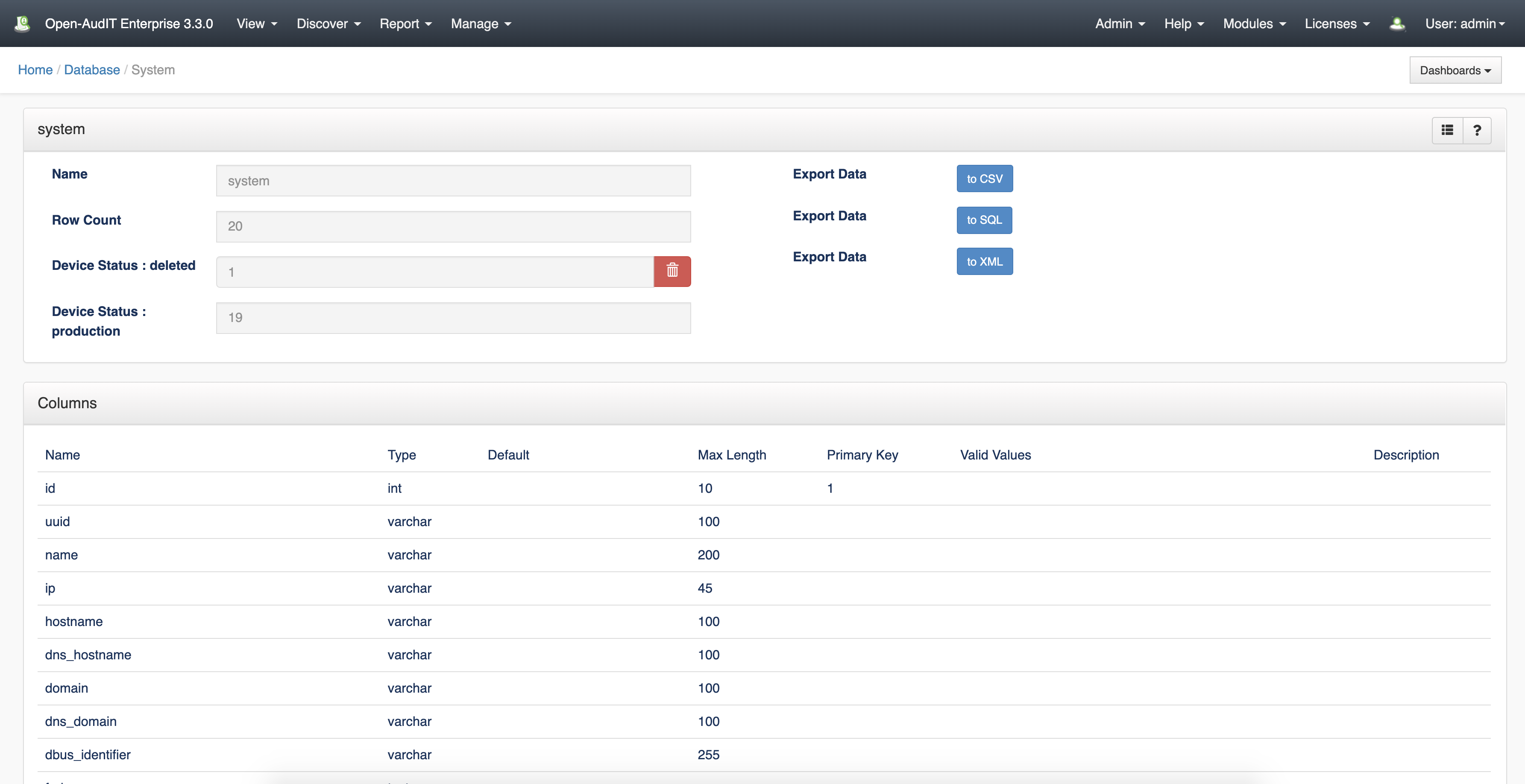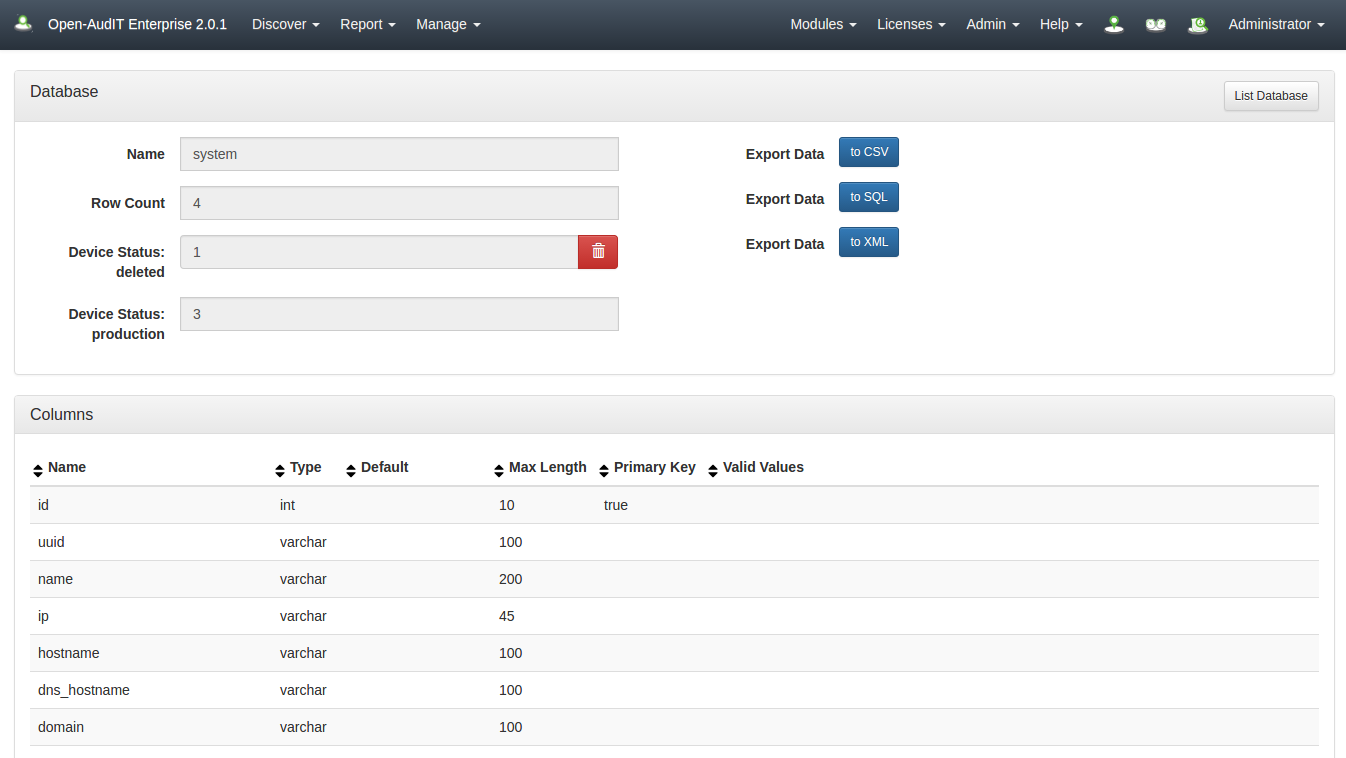"There are devices in Open-AudIT and I need to remove some to free-up licenses or just .
"I need to remove devices because I don't want them reported."
"How do I delete devices?"
Updated for 5.0.0 and newer releases
Deleting a single device is as easy as clicking the delete icon on the Devices List or Devices Read pages.
Deleting multiple devices is easy to do using the Bulk Edit functionality.
- Go to the devices view. Manage → Devices → List Devices.
- Use the search and or filter to find the devices you want to disable.
- Check the checkboxes on the right of the devices to select them - the check box at the top will select all visible ones.
- Click the "Bulk Edit" icon on the top of the checkbox column.
- Change the Status field to Deleted and click the green 'Submit' button to save.
Go to menu -> Admin -> Database -> List Tables.
Click the 'devices' table details icon.
You'll see various options for deleting rows (devices) from the database on that page. Click the RED Delete button in the Device Status: Deleted row.
- Done
And don't forget if you're using the JSON API, you can send a DELETE request to /open-audit/index.php/devices/ID where ID is the id of the device to delete. This can be wrapped in a loop to delete an array of devices, quite easily.
Pre 5.0.0
There are three scenarios.
- You can stop certain devices from being managed in Open-Audit Enterprise which will reduce the device count.
- Mark devices as Deleted and then completely remove the "deleted" devices from the database.
- Configure Open-AudIT to allow deleting when Status is set to Deleted.
1. Stop Devices from being Managed in Open-Audit Enterprise.
This process is applicable with Open-Audit v 3.x
- In Enterprise or Professional Go to the devices view. Manage→Devices→List Devices.
- Use the search and or filter to find the devices you want to disable.
- Check the check boxes on the right of the devices to select them - the check box at the top will select all visible ones.
- Click "Bulk Edit"
- Find the configuration item "Manage in Open-AudIT Enterprise" and set this to No and then click the Green tick box to save it.
- Browse back to the Devices List view and confirm the device count
2. Deleting devices Completely a Step-by-step guide
This process is applicable starting with Open-AudIT v 2.x
- Edit the device and set its Status to 'Deleted'.
- Open a browser to: http://<hostname>/omk/open-audit/devices
- On the far right of the table click the box for each device that should be deleted.
- At the upper right hand corner of the table click the blue 'EditBulk Actions' Button.
- On the next page find the 'Status' field.
- Click the edit icon to the right of this field.
- From the drop down menu select deleted.
- Click the green check box to the right of the filed field that has just appeared.
Go to menu -> Admin -> Database -> View List Tables.
Click the 'system' table's View Details icon.
You'll see various options for deleting rows (devices) from the database on that page. Click the RED Delete button in the Device Status: Deleted row.
3. Delete when Status is set to Deleted
If you edit the Open-AudIT configuration for the item "device_auto_delete" and set it to "y", after prompting:
Are you sure?
Your settings mean this will permanently DELETE this device and remove all its data from the database.
Is this acceptable?
on the Bulk Edit screen and the device details screen, the device(s) will be purged from the database.
...
This saves having to perform the additional steps (step 2 onward) in #2 above.
Need to delete lots of devices at once? Check out: How to Bulk Edit device attributes
Related articles
...
| Content by Label | ||||||||||||||||||||
|---|---|---|---|---|---|---|---|---|---|---|---|---|---|---|---|---|---|---|---|---|
|

